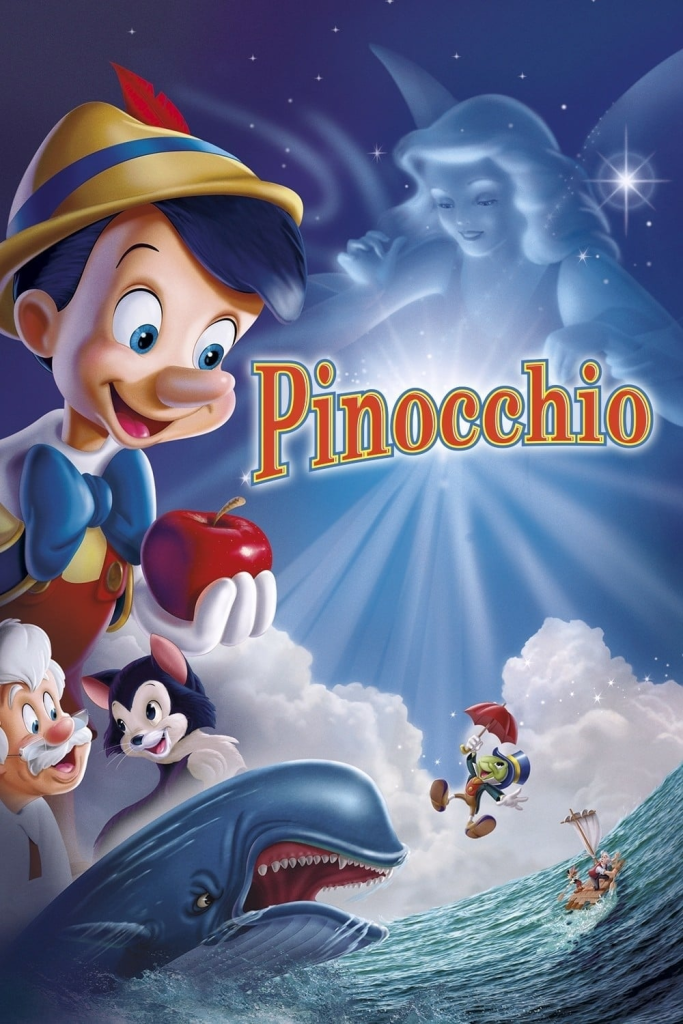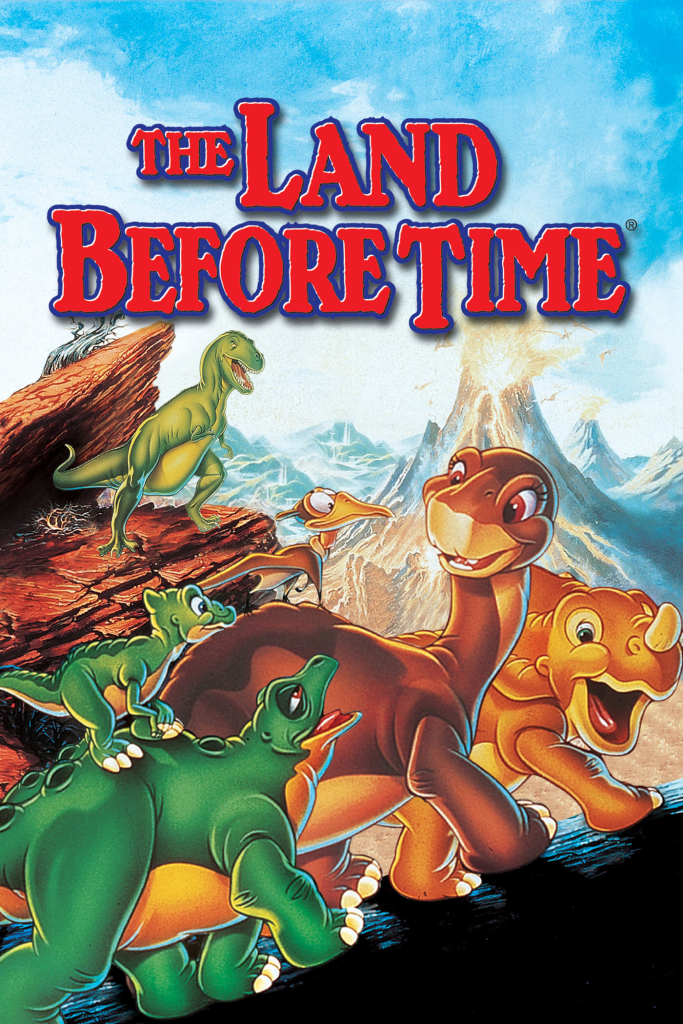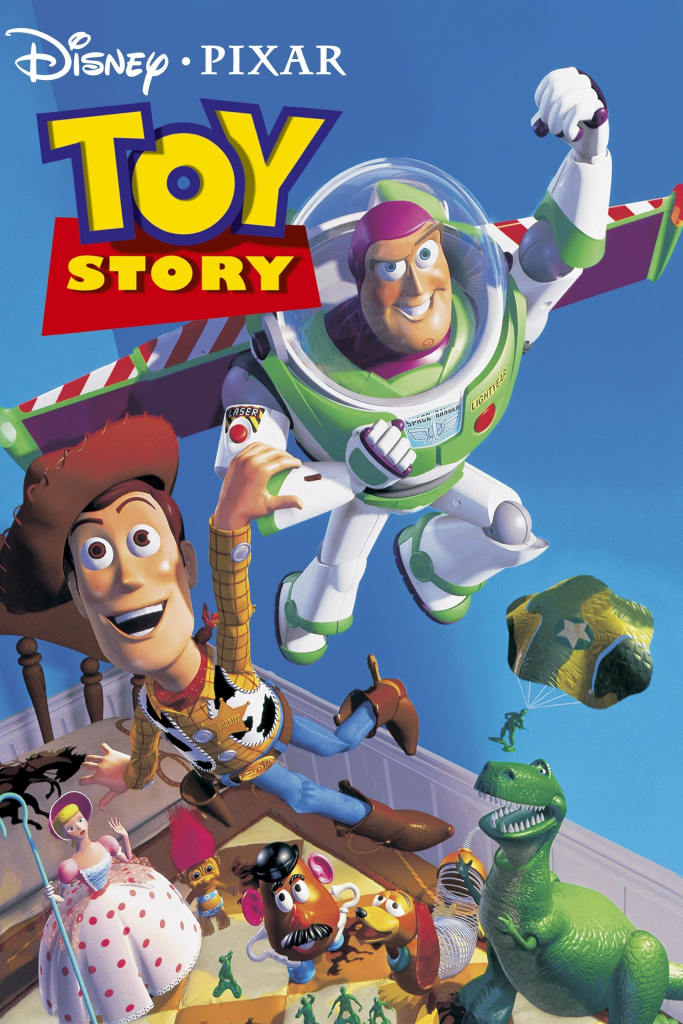Animated films have undergone a remarkable evolution since their inception, captivating audiences of all ages with their innovative storytelling, stunning visuals, and timeless charm. From the early days of hand-drawn animation to the advent of computer-generated imagery (CGI), the journey of animated cinema is a testament to the boundless creativity and technological advancements that have reshaped the medium over time. This transformation has not only revolutionized the way stories are told but has also expanded the scope of animation as a powerful tool for artistic expression, cultural reflection, and entertainment. In this exploration, we delve into the fascinating history of animated films, tracing the significant milestones and pivotal moments that have shaped their trajectory, and examine how they continue to push boundaries and defy expectations in the modern era.
Here are five films that have shaped the evolution of animation as a medium.

In the early days of animated films, Sergei Eisenstein hailed Disney’s Snow White and the Seven Dwarfs as a groundbreaking achievement, marking a shift in perception from mere children’s entertainment to a form of cinematic artistry capable of rivaling live-action features. Disney’s subsequent classics, Fantasia and Pinocchio, further solidified this newfound recognition, introducing innovative techniques such as the multiplane camera and expanding the narrative boundaries of animation.
The multiplane camera, pioneered by Disney for Pinocchio, revolutionized animation by introducing unprecedented depth and dimensionality. This innovation facilitated dynamic and immersive environments, enabling intricate compositions and layered storytelling. By simulating depth through multiple layers of drawings, the camera created a sense of immersion, drawing viewers deeper into the film’s world. Additionally, it allowed for smoother camera movements and enhanced narrative flow, seamlessly transitioning between different settings and perspectives.
Despite the technical advancements, the true magic of these films lies in their timeless storytelling. Pinocchio, in particular, resonates as a poignant parable about the journey to self-realization and the consequences of dishonesty. Its enduring appeal can be attributed not only to its moral depth but also to the exceptional craftsmanship of Disney’s animators, whose dedication and creativity continue to inspire generations of artists.
Indeed, the legacy of Disney’s early animated features reverberates throughout the history of cinema, shaping the trajectory of animation and influencing generations of filmmakers. From the meticulous attention to detail to the exploration of universal themes, these films set a standard of excellence that continues to define the art form today.

Disney, as an animation studio, has long been considered a behemoth in the industry, with a storied history of creating beloved animated classics. However, Don Bluth’s departure from Disney marked a significant turning point in the landscape of animated movies, ultimately leading to a dramatic shift in the industry.
Bluth, along with fellow animators Gary Goldman and John Pomeroy, left Disney in the late 1970s due to dissatisfaction with the direction the studio was taking. They felt that Disney’s films had become increasingly formulaic and lacked the depth and emotional resonance that characterized earlier classics. Bluth, in particular, was disheartened by what he perceived as a decline in artistic innovation and storytelling substance within Disney’s films.
Upon leaving Disney, Bluth and his colleagues embarked on a mission to revitalize the animation industry by creating films that prioritized storytelling with depth, maturity, and emotional authenticity. Their departure from Disney sparked a wave of innovation and creativity in animated filmmaking, as they sought to challenge the status quo and push the boundaries of the medium. Bluth’s films were darker, more mature, and dealt with themes and subject matter that were often considered too risky for mainstream animated features.
The Land Before Time stands as a seminal work in the history of animated movies, leaving an indelible mark on the genre and changing animation in several significant ways. Released in 1988, directed by Don Bluth and produced by Steven Spielberg and George Lucas, this film captivated audiences with its stunning visuals, heartfelt storytelling, and emotional depth.
One of the most notable aspects of The Land Before Time is its departure from the lighthearted, comedic tone often associated with animated films of the time. Instead, the movie delves into weighty themes such as loss, survival, and the journey to maturity.
The Land Before Time was a groundbreaking film that pushed the boundaries of animation both technologically and artistically. Its lush backgrounds, vibrant character designs, and fluid animation set a new standard for visual excellence in animated movies. By utilizing traditional hand-drawn animation techniques, the film achieved a timeless quality that resonated with audiences across generations.
In addition to its technical achievements, The Land Before Time showcased the power of collaboration and storytelling. Director Don Bluth, screenwriter Stu Krieger, and composer James Horner combined their talents to create a cohesive and emotionally resonant narrative. The film’s universal themes and relatable characters endeared it to audiences of all ages, establishing it as a beloved classic.
Furthermore, The Land Before Time left a lasting impact on the animation industry by inspiring future filmmakers and animators. Its success demonstrated that animated films could tackle serious subject matter while still entertaining audiences, paving the way for a new wave of animated movies that embraced storytelling with depth and maturity.

The transition from hand-drawn animated movies to CGI (computer-generated imagery) marked a significant evolution in the animation industry, with Pixar’s Toy Story standing as a revolutionary milestone in this shift.
Hand-drawn animation had been the dominant form of animation for decades, characterized by intricate artwork and frame-by-frame rendering. However, as technology advanced, CGI emerged as a new frontier, offering animators unprecedented control and flexibility in creating animated worlds.
Toy Story, released in 1995, was the first feature-length film entirely created using CGI, marking a seismic shift in the animation landscape. Directed by John Lasseter and produced by Pixar Animation Studios, the film introduced audiences to a visually stunning and immersive world inhabited by anthropomorphic toys.
One of the key advantages of CGI was its ability to create lifelike characters and environments with greater detail and realism than hand-drawn animation. The characters in Toy Story were brought to life with fluid movements, expressive facial animations, and intricate textures, making them feel tangible and believable to audiences.
Moreover, CGI offered animators a level of creative freedom that was previously unattainable with hand-drawn animation. The digital medium allowed for dynamic camera movements, complex lighting effects, and intricate set designs, enabling filmmakers to craft immersive and visually stunning worlds that pushed the boundaries of imagination.
Beyond its technical achievements, Toy Story was revolutionary for its storytelling and characterization. The film’s engaging narrative, witty dialogue, and endearing characters captivated audiences of all ages, demonstrating that CGI animation could deliver compelling storytelling on par with traditional hand-drawn animation.
Toy Story not only paved the way for a new era of CGI animated movies but also inspired a generation of filmmakers and animators to explore the possibilities of digital animation. Its success revolutionized the animation industry, setting the stage for Pixar and other studios to produce a wide range of CGI films that continue to captivate audiences around the world.

Stop motion animation has a rich history dating back to the late 19th century. This technique involves photographing physical objects frame by frame and adjusting them slightly between each shot to create the illusion of movement. In the early 20th century, pioneers like J. Stuart Blackton and Albert E. Smith experimented with stop motion animation in short films such as The Humpty Dumpty Circus (1898), featuring toy circus figures coming to life.
During the Golden Age of Animation in the 1930s to 1950s, stop motion continued to be utilized alongside traditional hand-drawn animation. Studios like George Pal’s Puppetoons and Ray Harryhausen’s work in films like The 7th Voyage of Sinbad (1958) showcased the versatility and imaginative potential of stop motion animation.
In the 1960s and 1970s, stop motion animation found further use in television and commercials, with series like Gumby (1956) and Davey and Goliath (1960) becoming popular. Its eye-catching visual style made it a favorite for advertising campaigns, contributing to its enduring appeal and widespread recognition.
In the 21st century, stop motion animation experienced a resurgence, thanks in part to studios like Laika Entertainment. Laika Entertainment has played a pivotal role in revitalizing stop motion animation, showcasing its potential through groundbreaking films and innovative techniques. The studio’s commitment to pushing the boundaries of the medium is evident in its use of advanced technologies like 3D printing for character faces and intricate set designs, creating visually immersive worlds that set a new standard for animation quality. However, Laika’s success goes beyond technical excellence; its films are renowned for their compelling storytelling and complex characters, tackling mature themes and resonating with audiences of all ages. By daring to explore unconventional narratives and take creative risks, Laika has challenged traditional animation norms and demonstrated the versatility of stop motion as a storytelling medium.
All of this can be culminated in Laika’s first film Coraline. Coraline, released in 2009 and directed by Henry Selick, marked Laika’s first foray into feature-length filmmaking. Based on Neil Gaiman’s novel of the same name, the film tells the story of Coraline Jones, a young girl who discovers a mysterious parallel world behind a hidden door in her new home. However, this seemingly perfect world soon reveals a dark and sinister underbelly, leading Coraline on a perilous journey of self-discovery and bravery.
What set Coraline apart was Laika’s commitment to pushing the boundaries of stop-motion animation. The studio employed innovative techniques, including 3D printing for character faces and intricate set designs, to create a visually stunning and immersive world. The attention to detail and craftsmanship evident in every frame of the film showcased Laika’s dedication to quality and excellence in animation.
Moreover, Coraline demonstrated Laika’s willingness to tackle mature and complex themes in its storytelling. The film’s dark and atmospheric tone, coupled with its exploration of themes such as identity, bravery, and the importance of family, resonated with audiences of all ages and garnered widespread critical acclaim.
Spider-Man : into the Spider-Verse (2018)

When it comes to a film that has completely redefined animation today, all fingers point to Spider-Man: Into the Spider-Verse.
Spider-Man: Into the Spider-Verse has cemented its status as a modern classic in animation due to its groundbreaking approach to storytelling and innovative animation techniques. The film’s revolutionary animation style combined computer-generated imagery (CGI) with traditional hand-drawn animation techniques, resulting in a dynamic and visually stunning aesthetic that captivated audiences. By embracing the look and feel of comic books, with bold colors, expressive character designs, and graphic effects like halftone patterns and onomatopoeic text, Spider-Man: Into the Spider-Verse pushed the boundaries of the medium and created a unique and immersive visual experience.
Moreover, the film’s narrative complexity and depth set it apart from traditional animated fare. It explored themes of identity, family, and heroism in a nuanced and compelling way, appealing to both children and adults. The introduction of the multiverse concept, which brought together multiple iterations of Spider-Man from different dimensions, offered a fresh and engaging take on the beloved superhero franchise.
Spider-Man: Into the Spider-Verse also made significant strides in promoting diversity and representation in animation. Featuring a diverse cast of characters from different backgrounds and dimensions, including Miles Morales, an Afro-Latino teenager who becomes the new Spider-Man, the film celebrated inclusion in a genre often criticized for its lack thereof. This aspect of the film resonated with audiences who saw themselves reflected on screen, further contributing to its widespread acclaim and cultural impact.
The critical acclaim and commercial success of Spider-Man: Into the Spider-Verse demonstrated that animated films could be both artistically innovative and commercially viable. Its bold visual style, diverse representation, and compelling storytelling set a new standard for animated storytelling, inspiring future filmmakers and paving the way for more inclusive and boundary-pushing animated films in the future.
As we reflect on the incredible journey of animated films, it becomes clear that their evolution has been nothing short of extraordinary. From humble beginnings to the forefront of cinematic innovation, animated cinema has continuously adapted and flourished, captivating audiences worldwide. With each passing era, storytellers, animators, and filmmakers have pushed the boundaries of creativity and technology, resulting in a rich tapestry of cinematic masterpieces that transcend time and genre.
As we look to the future, the legacy of animated films remains bright, fueled by endless possibilities and a commitment to pushing the medium to new heights. From hand-drawn classics to cutting-edge CGI spectacles, animated films continue to inspire, entertain, and resonate with audiences of all ages. As technology evolves and storytelling techniques evolve, one thing remains constant: the enduring magic of animated cinema, which continues to enchant and delight generations to come. In this ever-changing landscape, animated films will undoubtedly continue to shape our imaginations, evoke our emotions, and remind us of the limitless potential of storytelling through the art of animation.
Richard Wu is a senior studying piano performance at the Jacobs School of Music. This is his sixth semester at Media Services.
1 Comment
Ever-changing landscapes, indeed…sometimes too fast of a change. Streaming platforms have demolished the traditional business systems of animation itself, TV and cinema suffering in the process. Based on a seminar from Mike Disa, his predictions for the immediate future is the new tooling of AI programs. His lecture was moreso for typical job-seeking as he had issues with newer upstarts in the past, but the next big evolution may well come from an independent party of fewer than any settled company.